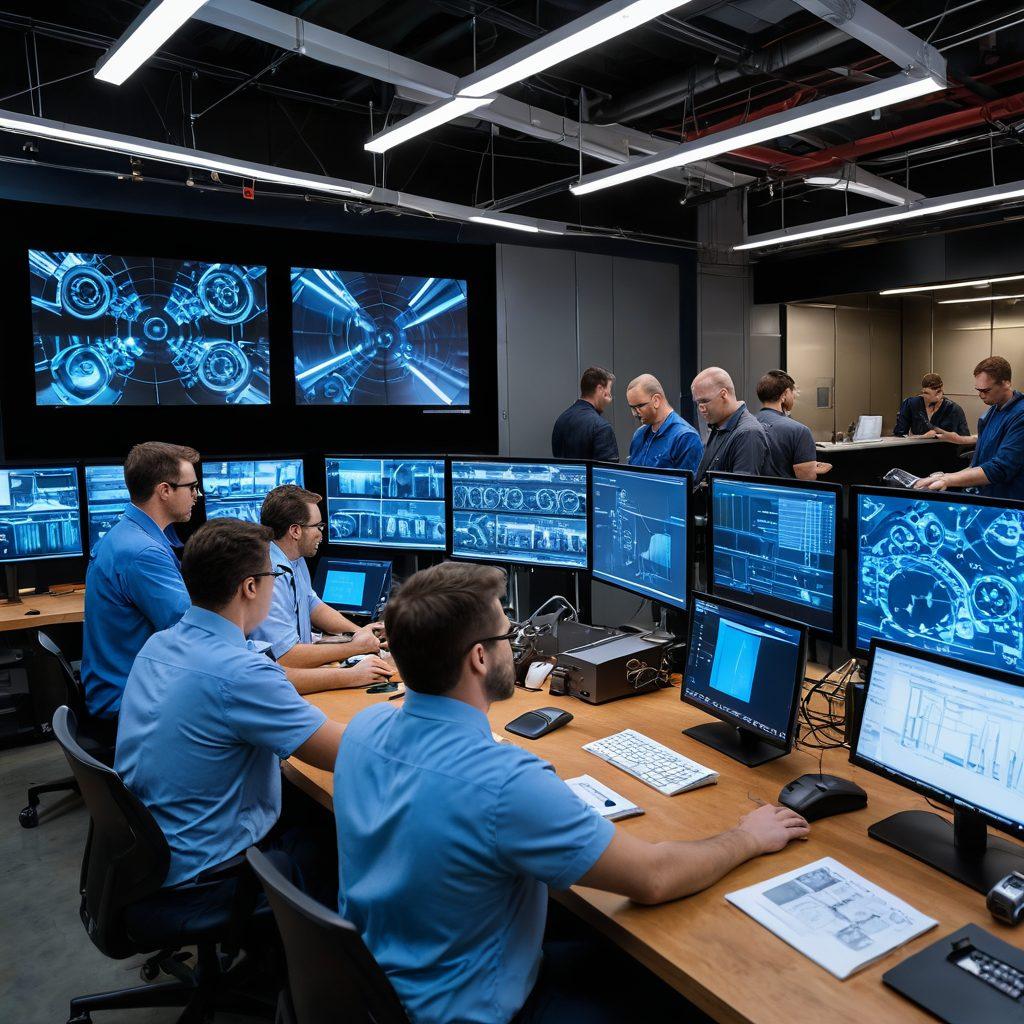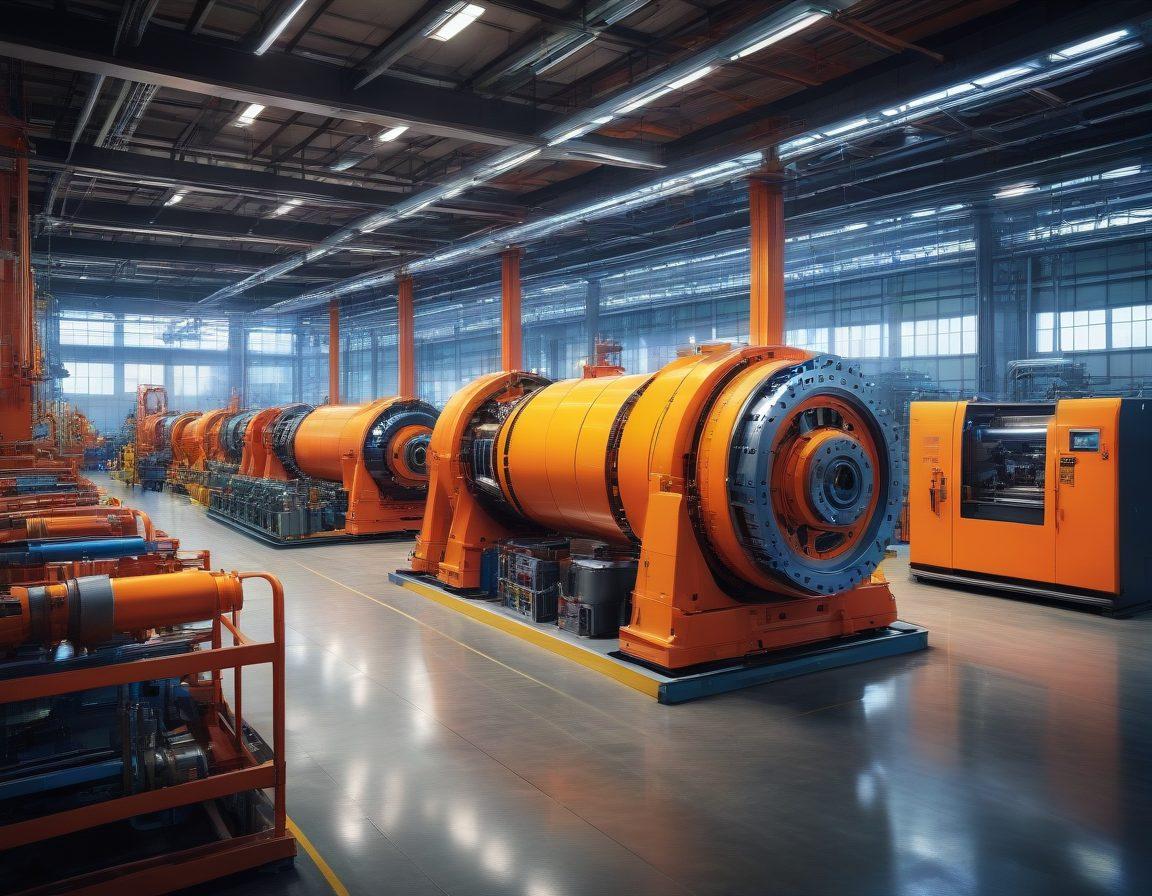Mastering the Art of Shaft Design: Innovations in Engineering and Manufacturing
When we think of machinery and the intricate dance of gears and engines, it's easy to overlook one of the unsung heroes of mechanical systems: the shaft. Shaft design plays a pivotal role in transforming energy and power into tangible movement. But what makes a shaft stand out in the realm of machinery technology? Particularly in today's fast-paced world of industrial manufacturing, leveraging cutting-edge techniques for shaft design can revolutionize the way industries operate. Have you ever wondered how the innovations in shaft manufacturing can enhance productivity and efficiency?
Imagine walking into a factory where automation in manufacturing is not just a buzzword, but a reality. Sleek machinery, humming with precision, can trace its effectiveness back to sophisticated shaft engineering. Modern engineering is constantly seeking ways to integrate advanced technologies, making shafting not just a component but a cornerstone of efficiency. As we delve into the heart of this topic on our engineering blog, let's explore the innovative techniques that are reshaping the landscape of shaft design.
The journey of shaft design from concept to execution is a tale of creativity and engineering prowess. One quote that resonates deeply with this process is by Henry Ford: "If everyone is moving forward together, then success takes care of itself." This collaboration between engineers and manufacturing teams leads to dynamic product design that meets and exceeds industry expectations. Whether through improved materials, smarter geometry, or automation processes, every step signifies a leap towards a more efficient and sustainable manufacturing future.
So, what does modern shaft design entail? It involves a combination of traditional knowledge and modern innovations, drawing on advancements in engineering technology and industrial technology. Engineers today are armed with sophisticated software and simulations that allow them to predict performance and troubleshoot potential issues before they arise. This proactive approach not only enhances the durability of the shaft but streamlines shaft manufacturing processes significantly. Isn’t it fascinating how innovation paves the path for smarter, more resilient shafts?
As we look ahead to the future of shaft design, we must embrace the challenge of maintaining excellence while adapting to rapidly evolving technologies. The intersection between machinery technology and engineering solutions may also inspire other fields beyond industrial equipment. Sharing insights and advancements in our machinery blog offers engineers a platform to collaborate, inspire, and explore further innovations in shaft engineering. How do you envision the future of shaft design in your industry? Together, let's take these conversations forward and reshape the future of manufacturing with innovation at the helm.
From Concept to Creation: The Journey of Innovative Shaft Manufacturing
Have you ever wondered about the journey of a simple metal cylinder that plays a crucial role in the mechanics of our world? This journey is not just about steel and machining; it's about the intricate ballet of engineering, design, and innovation that transforms a mere concept into a tangible product. Welcome to the fascinating world of shaft manufacturing—a vital part of machinery systems where shaft design meets cutting-edge technology. Today, we will explore the pathway from concept to creation and uncover how industrial technology is revolutionizing shaft engineering.
Shafting is more than just a physical component; it embodies the heart of mechanical systems that power everything from vehicles to heavy industrial equipment. In shaft design, engineers must consider factors such as strength, durability, and efficiency. They ask themselves questions like: "What materials will best withstand the forces at play? How can we automate the manufacturing process to enhance precision and reduce human error?" These intriguing queries shape the landscape of manufacturing technology and lead to groundbreaking engineering solutions.
Picture this: An idea sparks in the mind of an engineer, one that promises to change the very foundation of machinery technology. The design sketches come to life, leading to the painstaking phase of prototyping. Through iterations, tests, and adjustments, the vision grows clearer. The dance of creativity and practicality unfolds—how many designs have emerged from engineering blogs that later turned into successful shaft manufacturing processes? It’s a process that encourages engineers to think outside the box, pushing the boundaries of traditional manufacturing techniques.
In today’s fast-paced environment, the integration of automation in manufacturing is imperative. With state-of-the-art machinery and software, traditional practices have evolved, paving the way for more efficient shaft manufacturing processes. Engineers now utilize computer-aided design (CAD) and simulation tools to visualize the entire manufacturing workflow. This technology not only enhances productivity but also improves the quality and accuracy of final products. The marriage of technology and manufacturing creates a seamless connection between ideas and their physical counterparts.
As we reflect on the journey from concept to creation in shaft engineering, it’s clear that it’s not merely a linear path; it's a complex web of creativity, technical knowledge, and endless possibilities. For those involved in mechanical engineering or the broader field of industrial manufacturing, the lessons learned from shaft design can provide useful insights. Whether you’re a seasoned professional or an aspiring engineer, remember: Every component, no matter how small, has the potential to contribute to a grander scheme of innovation in our ever-evolving industrial landscape. So, what journey are you ready to embark on today?
Balancing Precision and Performance: Engineering Solutions for Today's Machinery
In the world of modern engineering, the term 'shafting' often invokes thoughts of precision and performance. With the increasing complexity of machinery systems, the stakes have never been higher. How do engineers balance these two essential attributes in shaft design? This intricate dance between precision and performance is key to developing reliable and efficient machinery. In this blog, we will explore the nuances of shaft engineering, highlighting innovative solutions and real-life applications that can enhance both product design and manufacturing processes.
Imagine a bustling factory floor where mechanical systems whir and pulsate with life. As machines operate at peak performance, it's the shafts hidden within that provide the backbone of reliability and strength. With advancements in engineering technology, the realm of shaft manufacturing has transformed dramatically. Today, engineers leverage cutting-edge techniques to ensure every shaft is crafted to perfection, balancing durability with lightweight performance. What makes a great shaft design? Is it merely about strength, or is there an art to achieving optimal precision?
In the realm of industrial equipment, shaft engineering isn't just a technical requirement; it’s a crucial component driving innovation across various sectors. Whether in the automotive, aerospace, or energy industries, understanding machinery technology is paramount. By integrating sophisticated materials and modern manufacturing technology, engineers can create shafts that withstand extreme conditions while maintaining performance. It’s a journey of experimentation, calculation, and creativity—a true testament to the relentless pursuit of excellence in the field of mechanical engineering.
Perhaps one of the most exciting developments in shaft design today is the incorporation of automation in manufacturing. Picture this: robotic systems working in harmony with human ingenuity, providing unparalleled consistency in shaft manufacturing. Engineers now have the ability to implement real-time monitoring systems that foster a deeper understanding of performance metrics. This leads to improved designs and enhanced machine efficiency. How do engineers ensure that these automated processes meet the same exacting standards as traditional methods? It’s a complex question but one that reveals the dynamic landscape of engineering solutions at play today.
As we delve deeper into the world of shaft design, it becomes evident that the road ahead is filled with opportunities and challenges alike. The future of machinery technology is bright, brimming with potential for those ready to embrace innovation in both product design and manufacturing practices. Every breakthrough arises from asking the right questions and pushing the boundaries of what is possible. So, what will you choose to explore in your journey through the ever-evolving field of industrial manufacturing? The answers you seek may lie within the very shafts that power our technological advancements.


